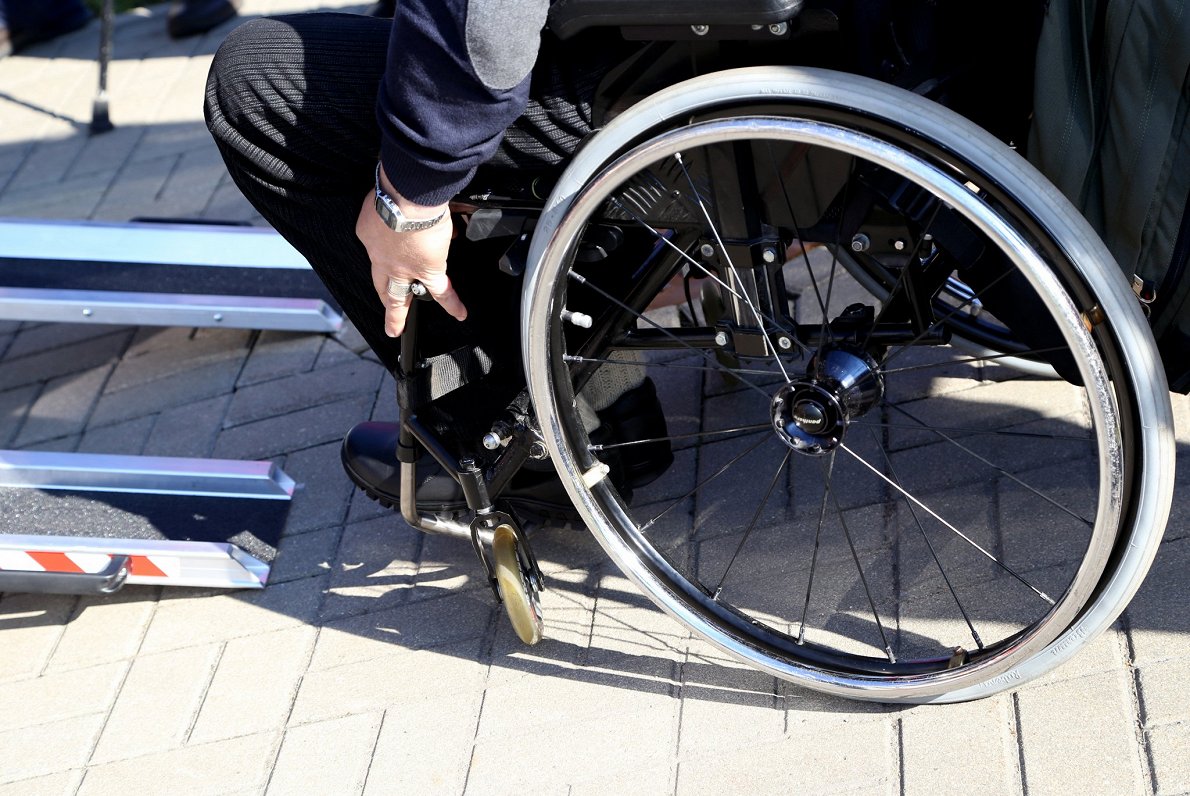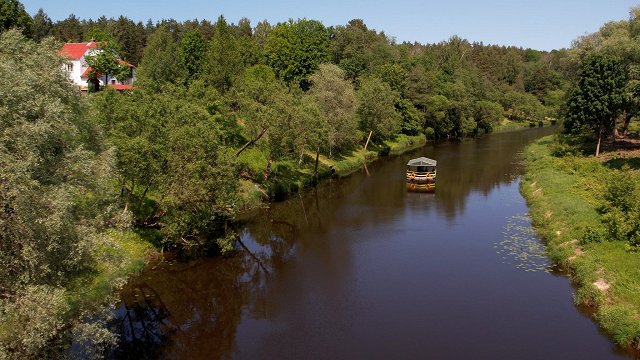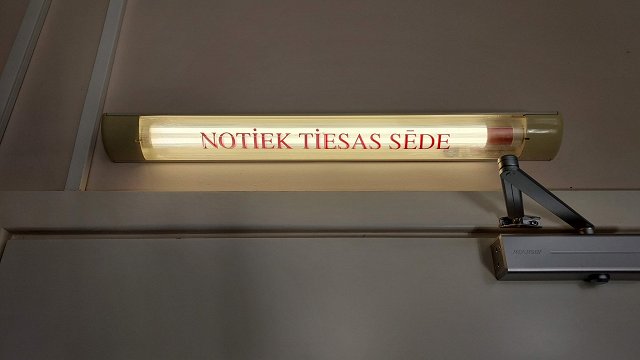Voldemārs Lapa has been in a wheelchair since he was born. He goes out of the house nearly every day entirely independently, yet, to get in buildings that are formally marked as accessible, he often needs to ask for help. Latvian Radio and Voldemārs Lapa looked at a few public buildings in the city center.
The building of the Economics Ministry, which is responsible for the construction sector, has finally installed a wheelchair lift this year. However, it is still not easy to conquer the EM building in a wheelchair – the button is not working at one entrance and there is no indication that there is a lift around the corner. A person can stay behind the door unnoticed for a long time, says a security guard from the other door.
“They've made that button as if it should be working, but it's not working for me, it's only working for me in the first post because there's a special one for the disabled [..] If a person comes with a wheelchair, I have to be Schwarzenegger to get him up here, honestly,” the guard said.
At the National Museum of Art, which is also often praised as a good model for accessing the environment, a wheelchair in the middle of the winter surprises employees unprepared. The message at the main entrance shows that, for technical reasons, people in a wheelchair must go to the entrance on the other side of the building, but when they reach them, the guard urges them to go back to the front door. In a few minutes, a museum employee has rushed to the back door, opened the door and let Voldemārs in. Nobody in a wheelchair has been seen here since the summer season.
A classic unfortunate example is a private clinic in a historic building. It is difficult to get into the narrow hallway, and the lift can only be lowered to the ground if a person pushes as deep as possible into a corner, otherwise, the lift strikes the wheelchair. From the dark corner, the buttons are hard to see and reach. All the while the person in the wheelchair tries to get in, other people cannot get past.
This creates a vicious cycle: the environmental accessibility requirements have been formally met, but the solutions are so uncomfortable and difficult that people avoid using them. Thus, there is a delusional notion that the need for them is overstated.
“We see that the availability of environment is difficult to use, and often the solutions are something that you don't want to go back to - there's some carpet to be removed, you need to call the security, you have to call the police, you have to call 15 different phones, and it's all so complicated that you don't want to visit the office twice where such access solutions are in place. The barrier to thinking and attitudes is huge,” said expert of environmental accessibility Jurģis Briedis.
An accessible environment for people in a wheelchair would allow them to be less dependent on the help of others and thus give them more autonomy, freedom and opportunity to take care of themselves. It would benefit not only the people with disabilities themselves, but also the general public, according to Apeirons, an association of disabled people and allies.
As reported earlier by LSM, the annual 'Dod pieci' (Gimme five) charity marathon this year will aim to raise awareness of the problems surrounding the accessibility of the environment for people with functional (vision, hearing, movement) impairments and contribute towards relevant solutions. Up until the marathon, Latvian public media will provide coverage relating to the issue.






























